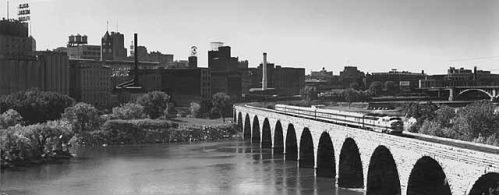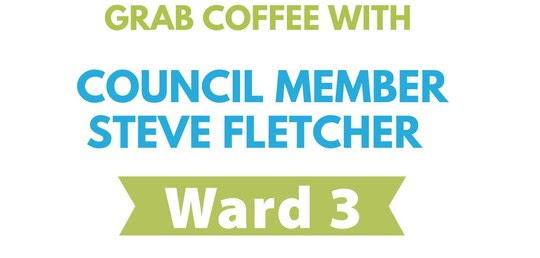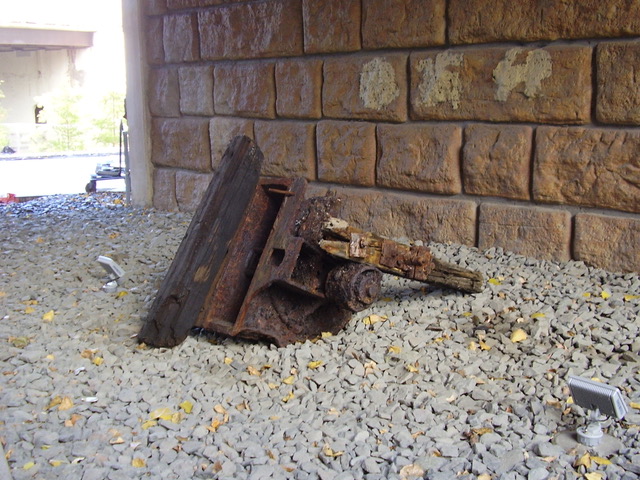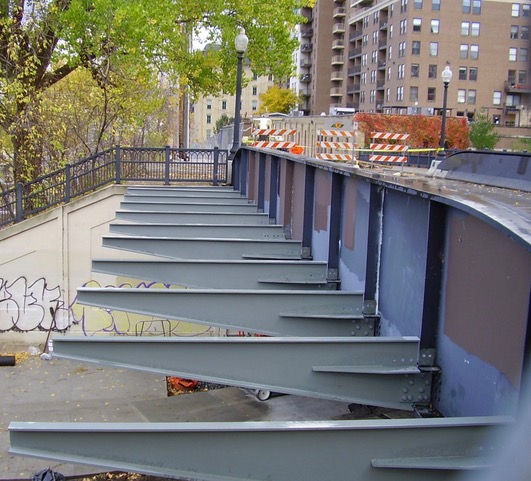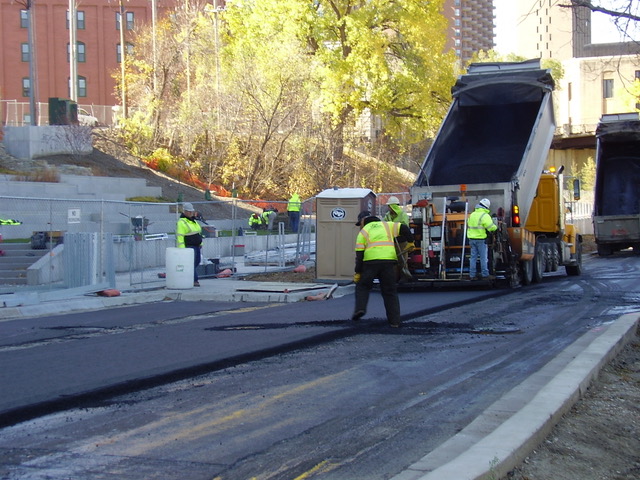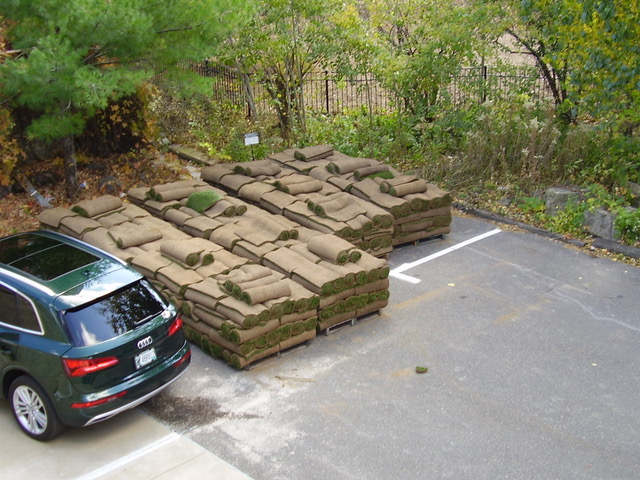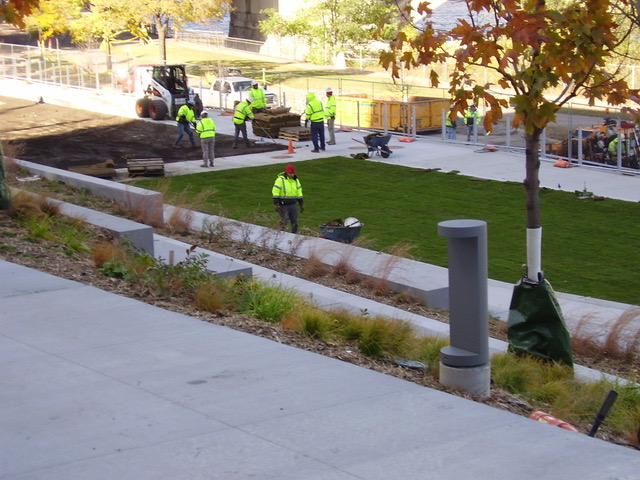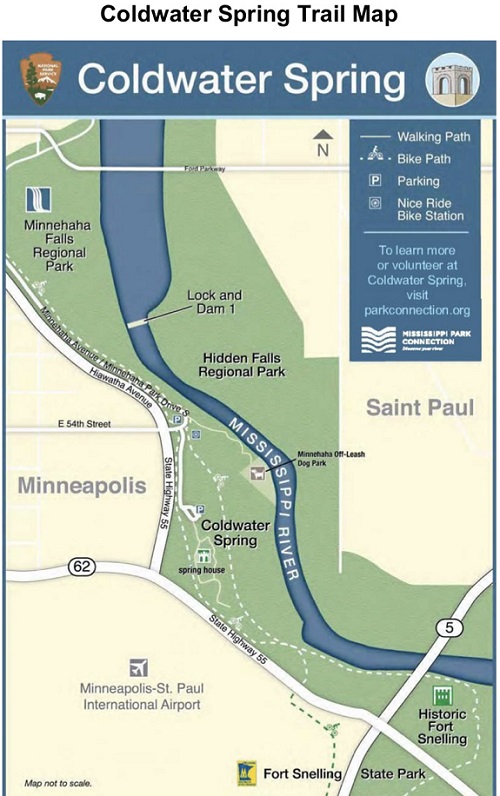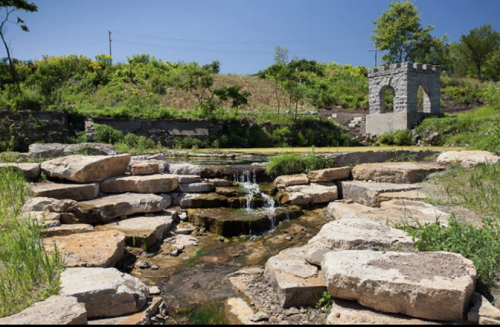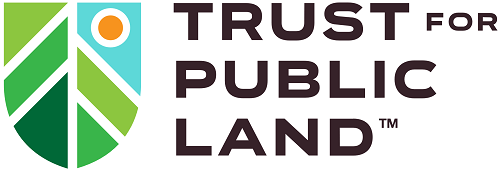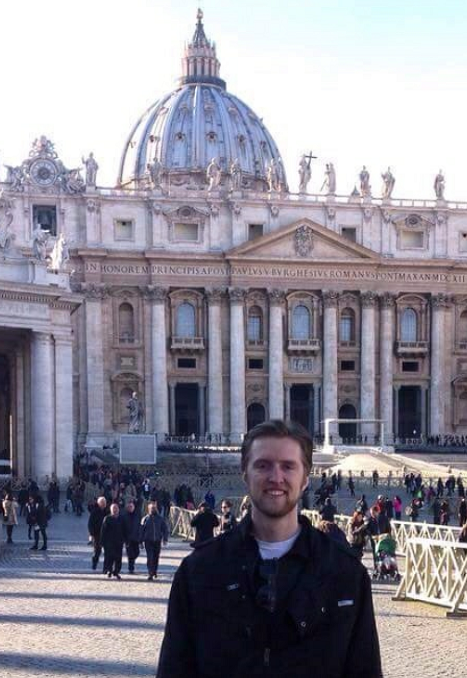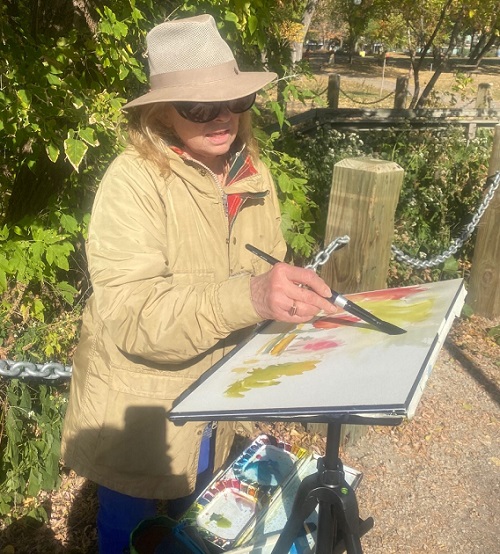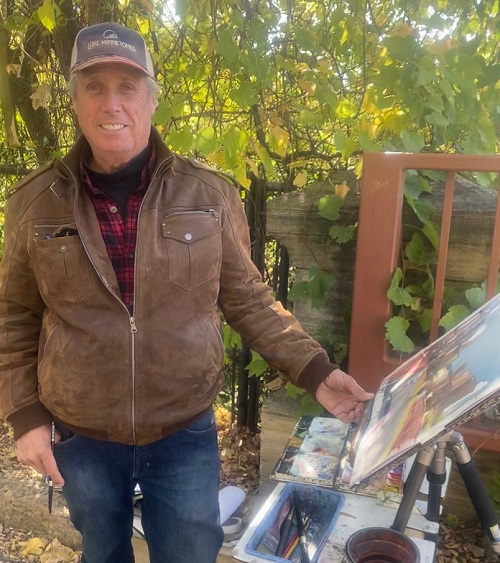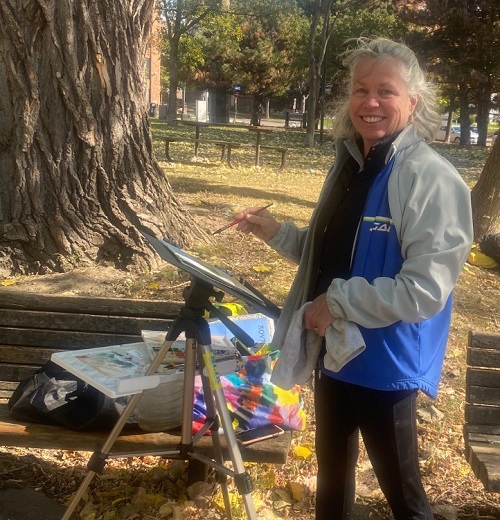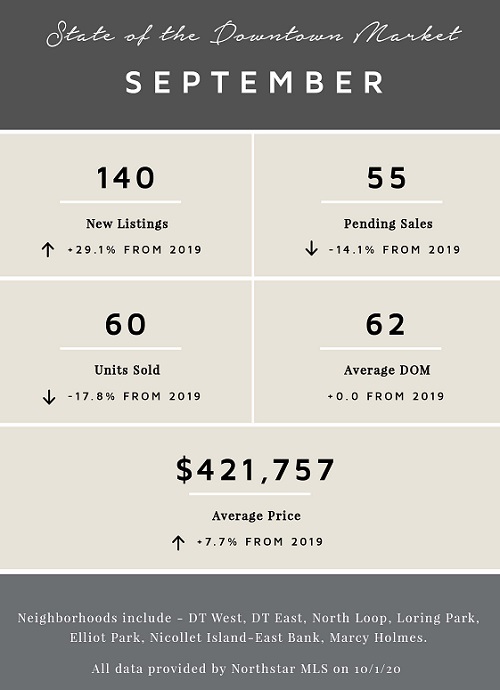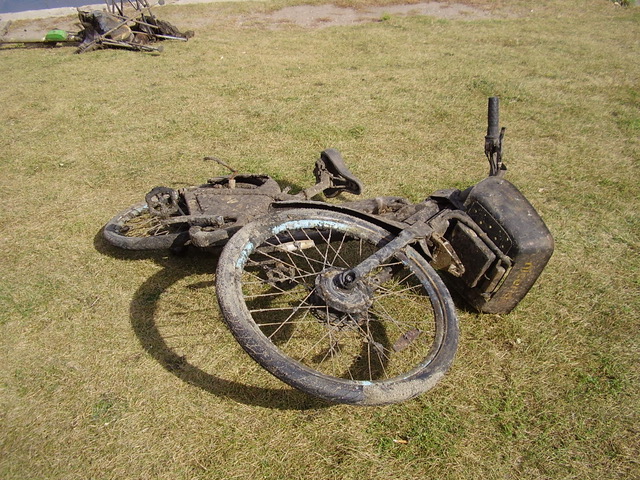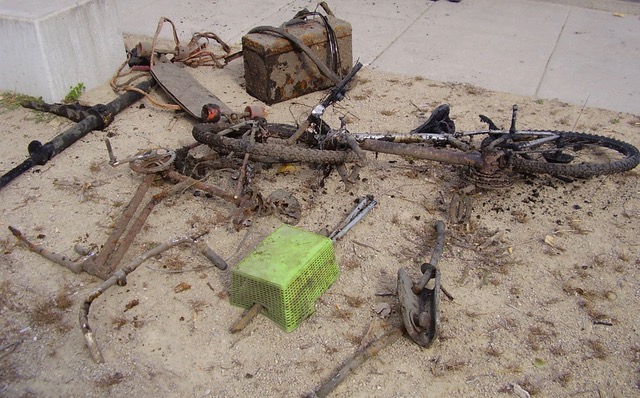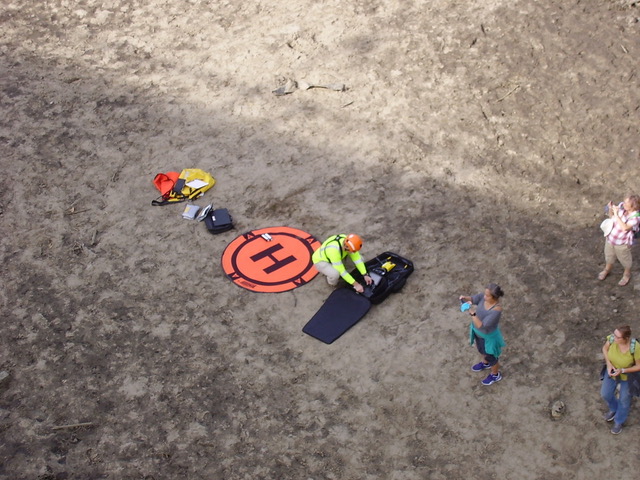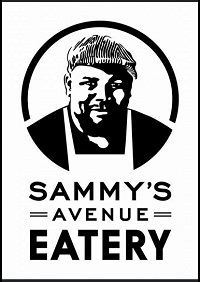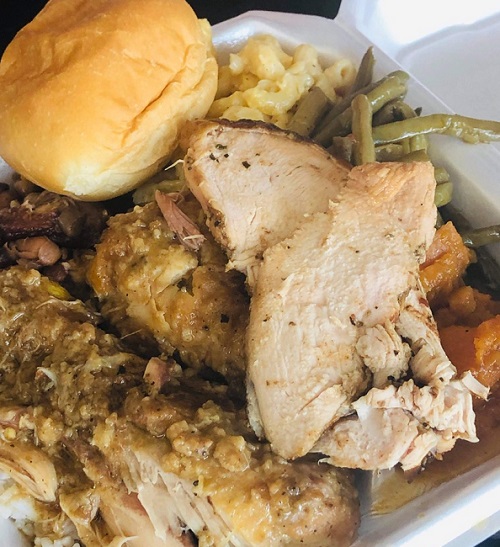
I am very happy to share with you that today the City Council voted unanimously to approve up to $1,972,950 in Coronavirus Aid, Relief, and Economic Security (CARES) Act Community Development Block Grant (CDBG) funds for the Indoor Villages project. Avivo has been authorized to operate this new shelter concept and it is scheduled to open by December 31, 2020.
The Indoor Villages project will be a low barrier shelter for people experiencing homelessness. The model is unique in that it will be comprised of 100 tiny shelters located inside a warehouse building. Each resident will have their own individual living space. The program is intended to create a safe, secure and service-rich environment where residents can connect with wrap-around services designed to connect people to permanent housing. Indoor Villages is a model that is well designed for the COVID-19 pandemic, as it allows for more social distancing and provides personal space for residents. It may also better serve people who do not feel comfortable staying in a traditional shelter setting by giving them their own secure, separate spaces. Avivo’s operations will include client intake, shelter staffing, coordination of daily meals, mail distribution and security. Avivo is a critical partner to the City in addressing homelessness, mental health and substance abuse, undoing racism and addressing economic and health disparities.
The City anticipates that the novel coronavirus COVID-19 will continue to affect the metropolitan area for the foreseeable future and requires safe alternatives to unsheltered homelessness particularly as winter approaches, to reduce reliance on COVID-19 unsafe, overcrowded indoor alternatives like doubling up. The Indoor Villages proposal is eligible for CDBG-CV funds for operations under the public services category. The State of Minnesota and Hennepin County have also provided funding for this project. The State recently approved $2 million in funding to stand up additional shelter capacity before winter and Hennepin County approved $2.2 million in CARES funds. The Indoor Villages project team is in discussions with a private owner to lease space located at 1251 N Washington Ave as the site for this project.
Lunch with Lisa Returns in a Virtual Format
After a six month hiatus, we are thrilled to be bringing back our Lunch with Lisa constituent gathering in a new, covid safe environment.
Wednesday, October 28, 2020 (12:00 – 1:00)
Please join us as we welcome Metropolitan Council Member, Robert Lilligren,
President and CEO of the Native American Community Development Institute (NACDI)
Robert will share about the amazing work being done to build a 21st Century American
Indian Community including their work on the American Indian Cultural Corridor.
Please RSVP to Judy Sherin if you plan to join us.
judy.sherin@minneapolismn.gov or call 612-673-2207
To join the event, just click the link below and you will be directed to the virtual event!
Join Lunch with Lisa Event: October 28
Reminder: Fall Street Sweeping Begins October 20
Crews will sweep streets across Minneapolis to keep leaves and debris out of the storm drains before winter and ending up in our lakes and rivers as much as possible.
On Tuesday, Oct. 20, Minneapolis Public Works will begin the big task of curb-to-curb sweeping and leaf collection on streets throughout the city. During the four weeks of the comprehensive fall street sweep, crews will clean about 1,000 miles of city streets. To make sure crews can do the best job possible, temporary “No Parking” signs will be posted at least 24 hours in advance so streets will be clear of cars when they’re swept. The first signs will be posted Monday, Oct. 19, and sweeping will begin the next day. Anyone who parks on the street will need to follow posted parking rules or their cars may be ticketed and towed.
Click here for the Street Sweep Interactive Map/Schedule
Read more and find ways to stay informed about the parking rules.
2020 Collection of Leaves and Bundled Brush Ends Week of Nov. 16
Garbage day in the week of Nov. 16 is the last 2020 collection for leaves, brush and other yard trimmings. Minneapolis Solid Waste & Recycling customers can set properly prepared yard waste at their alleys or curbs next to their garbage carts by 6 a.m. on garbage day.
Yard waste must be in compostable bags – paper (Kraft) or compostable plastic – or unbagged in a reusable container 32-38 gallons in size, at least 26 inches high, with sturdy handles. Reusable containers are lifted and emptied by hand; they must be easily managed. Yard waste is not allowed in City-provided containers.
Preparing yard trimmings and leaves
Preparing brush
- Less than 40 pounds.
- Less than 3 feet long.
- Branch size less than 3 inches in diameter.
- Must be bundled with string or twine (no wire or tape).
Reusable containers
- Less than 40 pounds full.
- Between 32 and 38 gallons in size.
- At least 26 inches high.
- Must have sturdy handles.
Which bags can be used in the program?
- Compostable plastic bags labeled with the BPI logo.
- Paper (Kraft) bags.
Bags marked “biodegradable” or “degradable” do not meet the State law and are not accepted.
It’s against the law and bad for our lakes to rake leaves into the street.
Anyone who has questions about leaf and brush pickup can call 612-673-2917 between 8 a.m. and 4 p.m.
Update on Early Voting Turnout and Preparations for Election Day
Early voting continues at a record pace in Minneapolis. As of the end of the day Oct. 14, 82,941 early votes have been received for the 2020 election.
Early voting statistics
Breakdown of the 82,941 early votes received:
- 53,018 mailed in mail ballots.
- 14,466 mail ballots dropped off in person.
- 10,109 in-person votes at Elections & Voter Services.
- 5,348 Minneapolis votes cast at Hennepin County Elections.
Registered voter count as of the morning of Oct. 14: 271,049. This number will continue to change up until (and on) Election Day as the County processes voter registrations.
Early voting options between now and Election Day, Nov. 3
The City recommends applying for a mail ballot no later than Oct. 20 to ensure you have enough time to receive and return your ballot and putting your voted mail ballot in the mail no later than Oct. 27. Ballots will count if they are postmarked on or before Nov. 3 and received in the mail no later than Nov. 10. If you would rather drop your ballot off in person, you may do so until 3 p.m. on Election Day.
- Mail ballot drop-off locations. All open for drop-off 8 a.m.-4:30 p.m. Monday-Friday (extended and weekend hours begin Oct. 19).
-
- Minneapolis Election & Voter Services, 980 E. Hennepin.
- Minneapolis Convention Center.
- Hennepin County Government Center, 300 Sixth St. S.
- On Monday, Oct. 19, nine more Minneapolis drop-off locations will open (for Minneapolis voters only). All sites will be open on Election Day through 3 p.m. – the deadline for returning a mail ballot in person.
- Early in-person voting at Early Vote Centers
- Open now: Minneapolis Early Vote Center, 980 E. Hennepin Ave.
- Open now: Hennepin County Government Center, 300 Sixth St. S.
- Opening Oct. 27: The North Early Vote Center will be at the Urban League Twin Cities, 2100 Plymouth Ave. N.
- Opening Oct. 27: The South Early Vote Center will be at the Longfellow Recreation Center, 3435 36th Ave. S.
Check the Status of Your Ballot
https://mnvotes.sos.state.mn.us/AbsenteeBallotStatus.aspx
- All voters can use this online tool to track the status of their absentee ballot, showing when the ballot is issued, when it is received back (after voter submits), and whether accepted or rejected.
Voting on Election Day, Nov. 3
To make voting safer during the pandemic, 50 polling places have changed locations. Be sure to use the online polling place finder to look up your polling place before you head out to vote.
All polls are open 7 a.m. to 8 p.m. and until all voters in line have been served on Election Day. There will be COVID-19 safety protocols in place at each polling location. Additionally, sergeants-at-arms will be deployed to all polling places.
Due to a recent court decision, mail ballots postmarked on or before Election Day and received in the mail by Nov. 10 will be counted. This means the election results on Election Night will be partial, unofficial results.
Stay informed
For more voter resources, including the 2020 Voter Information Guide available in English, Spanish, Somali and Hmong, visit vote.minneapolismn.gov.
New Mail Ballot Drop-Off Site Opens at the Minneapolis Convention Center
Voters who want to return their completed mail ballots directly to election officials can now drop them off at the Minneapolis Convention Center, 1301 Second Ave. S. People can walk, bike or drive there to return their ballots.
The Minneapolis Convention Center ballot drop-off tent is at the corner of Second Avenue and 12th Street. Voters who arrive by car can either enter the drive-through drop-off area on Second Avenue or park along 12th Street and walk over to the tent. Voters on bike or foot can head directly to the tent on 12th Street.
Learn more about drop-off hours.
For voters who speak Spanish, Hmong or Somali, the City’s 2020 Voter Information Guide is now translated and in an electronic format.
Find more voting resources.
MinneapolUS Strategic Outreach Initiative Seeks to Decrease Violence in City
The City of Minneapolis is piloting a new initiative to decrease violence with “violence interrupters” on the streets in neighborhoods now. Outreach workers for the MinneapolUS Strategic Outreach Initiative de-escalate situations before they become violent, support behavior change for people at the highest risk for violence and help communities heal. By identifying and interrupting conflicts and working to promote community healing, the initiative is intended to break the “contagious” aspects of violence such as retaliation.
The interrupters wear bright orange “MinneapolUS” t-shirts highlighting the initiative’s purpose: to address the root causes of violence together as a community. The Minneapolis Health Department’s Office of Violence Prevention initiative complements existing outreach organizations’ work already on Minneapolis’ streets, employing a specific approach built on the idea that violence is a public health issue. This approach is rooted in the power of Minneapolis communities. At the same time, it draws from strategies like Cure Violence, which has been effectively implemented across the globe.
Watch the Oct. 13 news conference on the initiative.
Visit the City website for more information about the City of Minneapolis Office of Violence Prevention and its other programs.
City Council Begins Review of Proposed 2021 City Budget
The City Council's Budget Committee has begun reviewing departments' proposed 2021 budgets and will continue through November. The City Council is scheduled to vote on budget adoption Dec. 9.
Mayor Jacob Frey's proposed budget calls for a 5.75% maximum levy increase. With a 12% increase in the overall tax base growth, three-quarters of Minneapolis residential property owners will see a decrease in their property tax bills with the median-valued household set to experience a $59 yearly decrease.
Public hearings on the proposed 2021 City budget are planned for Nov. 16, Dec. 2 and Dec. 9. Visit the City’s website to learn more about the mayor’s recommended budget, key dates in the approval process, FAQs and more. You can also watch a series of videos on the City’s budget process.
Neighborhoods 2020 Next Steps and Timeline
Now that the public comment period has closed on the Neighborhoods 2020 draft program guidelines, the Neighborhood & Community Relations Department (NCR) reviewed the 244 public comments received and is creating a summary. The comments and summary will be available on the Neighborhoods 2020 webpage before the City Council takes action.
Next steps
- Oct. 22: Public Health and Safety Committee makes notice of intent for public hearing.
- Nov. 5: Public Health and Safety Committee public hearing and presentation.
- Nov. 12: Budget Committee presentation to discuss the program allocations and base funding amounts.
- Nov. 13: Full City Council vote.
By voting on the program guidelines before the budget, the City Council can discuss the funding needed to implement the program as designed.
Over the next few weeks, NCR will send out more information as it becomes available.
Find City Council meeting calendars, agendas and decisions on the City of Minneapolis’ Legislative Information Management System (LIMS).
Read more about Neighborhoods 2020.
$50 Off Adoption Fees at Minneapolis Animal Care & Control Oct. 19-23
Up to 25 approved adopters will get $50 off cat or dog adoption fees from Minneapolis Animal Care & Control Oct. 19-23 thanks to Bounce. If you’re interested in adopting, view cats and dogs available for adoption and then make an adoption appointment by calling 311 or 612-673-6222. Due to COVID-19, the shelter is closed to the public and all adoptions are done by appointment only.
More about the Bounce Home With Your Adopted Pet campaign
Minneapolis Animal Care & Control is teaming up with North Shore Animal League America and Bounce Pet Hair & Lint Guard for a Bounce Home With Your Adopted Pet campaign. Throughout October, Bounce Pet is sponsoring adoptions at participating North Shore Animal League America shelter partners nationwide, covering up to $25,000 of adoption fees. Up to 500 approved adopters nationwide will receive:
- $50 off their adoption fees.
- A full-size sample of Bounce Pet Hair and Lint Guard.
A downloadable checklist co-authored by Bounce and North Shore Animal League America aimed at getting adopters ready for their new lifestyle so they can enjoy their new furry friends without worry.
Minneapolis Animal Care & Control Offering Vaccinations by Appointment
If your pet needs to be vaccinated, Minneapolis Animal Care & Control offers low-cost pet vaccinations by appointment. Minneapolis residents can sign up for an appointment using this form or by calling 311 or 612-673-6222.
Services available by appointment:
- Rabies vaccination: $10.
- DA2PP (distemper combination for dogs) vaccination: $10.
- PRC (distemper combination for cats) vaccination: $10.
- Microchip: $10.
Minneapolis Animal Care & Control offers low-cost pet vaccinations by appointment to follow safe COVID-19 guidelines and ensure there aren’t too many people in the shelter at one time. Because of capacity during the COVID-19 pandemic, this is only open to residents of Minneapolis who have or buy a current pet license.
Free COVID-19 Tests and Flu Shots
The City of Minneapolis is offering free COVID-19 tests and flu shots. All are welcome. You do not need insurance for the test. The flu shots are covered by insurance. If you have insurance, bring your insurance card for the flu shot. If you don’t have insurance, the flu shot is free.
Free COVID-19 tests at St. Peter’s AME, 401 E. 41st St. 2-6 p.m. Thursday, Oct. 22 2-6 p.m. Friday, Oct. 23 Make an appointment if possible, or register onsite.
Free COVID-19 tests and flu shots at Shiloh Temple, 1201 W. Broadway Ave. N. Noon-4 p.m. Saturday, Oct. 24
Free COVID-19 tests and flu shots at Hennepin United Methodist, 511 Groveland Ave. Noon-4 p.m. Saturday, Nov. 7
Free COVID-19 tests and flu shots at East Side Neighborhood Services, 1700 Second St. NE Noon-4 p.m. Saturday, Nov. 14
You can expect to get your test results in about two business days.
COVID-19 Situation Update as of October 14, 2020
Situational updates: Minneapolis
- There are 11,987 cases in Minneapolis and 252 deaths. The total number of cases increased by 4.8% over the previous week. Hospitalizations increased by 2.3% and ICU admissions by 2.2%.
- Minneapolis-specific daily case counts and demographics are available at www.minneapolismn.gov/coronavirus/dashboard.
- Persons under age 35 still make up close to 60% of cases over past week, but we are starting to see a slight increase in numbers among ages 65 and older. Average daily cases continues to be in the 70’s, with two days of over 100 cases diagnosed in the past week (last time that happened was in July).
- Mayor Frey’s Emergency Regulation No. 12 regarding masks remains in effect. The regulation requires people to wear face masks in all indoor public places.
- Mayor Frey’s Emergency Regulation No. 17 regarding bars and restaurants remains in effect. The regulation closes bar areas in restaurants, nightclubs, and indoor spaces of entertainment. Food and beverages can be served tableside while patrons are seated and patrons can approach the bar to order as long as they don’t congregate.
Situational updates: Minnesota
- There are 115,943 cases in Minnesota out of over 2.3 million tests completed. There have been 2,180 deaths from COVID-19 in Minnesota. The state has started to present both antigen (probable cases) and PCR tests (confirmed test). There are 30,923 cases and 955 deaths in Hennepin County.
- The Minnesota Department of Health (MDH) is using a color-coded map to track a seven-day rolling average of new cases in Minnesota. As of October 5 the State is reporting 18 cases per 100,000 and Minneapolis is at 16 cases per 100,000. These numbers put both Minnesota and Minneapolis in the orange category, which represents accelerated spread of COVID-19. The City rates are below the State, which may be a reflection of a testing push by MDH in greater Minnesota.
- Minnesota is currently in Phase III of the Stay Safe MN plan for reopening.
- Governor Walz’s statewide mask mandate remains in effect. People are required to wear masks in all indoor public places where people gather and some outdoor venues where physical distancing is difficult.
- Restaurants may increase the number of patrons at a table from six to ten. Patrons do not need to be related or live in the same household.
- The Minnesota Department of Health issued new guidelines that allow indoor visits at most long term care facilities that have not had new COVID-19 infections in the preceding two weeks and that the infection rate in the surrounding county is no more than 10%.
- The state has also issued guidance limiting the number of visitors a resident can have at one time as well as the length of the indoor visit.
Health Department Incident Command updates
Case investigation/Contact tracing
- The Health Department is conducting over 50 case investigations and contact follow-ups per day for individuals diagnosed with COVID-19. Currently, there are 22 investigators, including six non-MHD enterprise staff. The new AmeriCorps staff are in training and are shadowing current contact tracers. Of the 11,987 cases in Minneapolis, with no changes in the percentages interviewed, refused or lost to follow-up. Thirty-six percent of interviews of Minneapolis residents have been conducted in a language other than English.
- Minneapolis Public Schools (MPS) continues to monitor and evaluate a return to in person learning. MHD is working closely with MPS for case investigation and contact tracing.
Communications
- MHD staff, in partnership with Communications and NCR, created new isolation and quarantine handouts and videos in multiple languages. The materials provide guidance for those who test positive for COVID-19. The materials are available on the City’s coronavirus Print Resource web page.
- Isolation and quarantine flyer (PDF) - English, Hmong, Somali, Spanish
- Isolation and quarantine videos – English, Hmong, Somali, Spanish
- Please share these materials widely through your networks.
Community testing and flu shots
- Last week, MHD teamed up with the MN Department of Health and Stairstep Foundation to provide 737 tests over two days (360 tests on Thursday, October 8, and 377 tests on Friday, October 9) at New Salem Missionary Baptist Church in North Minneapolis. Of those tested, 56% reported their race as White, 10% Asian, 14% Black and 9% Latinx. Forty-five people were positive which represents a 6% positivity rate.
- Hennepin County provided 81 tests on Thursday, October 8, at Masjid An-Nur Mosque in North Minneapolis. Eleven people tested positive which represents a 14% positivity rate.
- MHD is exploring options for expanding COVID testing through the winter and spring, including looking at saliva tests that can be distributed directly to residents or used at pop-up testing sites. We received some sample saliva tests from the State to familiarize staff with the process.
Upcoming testing events
Test results are usually available in two business days.
- Masjid An-Nur Mosque, 1729 N. Lyndale Ave. 10 a.m.-1 p.m. Thursday, Oct. 15 Somali interpreters will be available. Register onsite.
- Phelps Park, 701 E. 39th St. 1-5 p.m. Thursday, Oct. 15 1-5 p.m. Friday, Oct. 16 (Flu shots available on Friday) Spanish and American Sign Language interpreters will be available. Register onsite.
- St. Peter’s AME, 401 E. 41st St. 2-6 p.m. Thursday, Oct. 22 2-6 p.m. Friday, Oct. 23 Pre-registration is available, or register onsite.
COVID-19 Vaccine
- Information and planning on COVID vaccination efforts are ramping up. MHD has regular, weekly planning and coordination calls with MDH and our regional Healthcare Coalition. In addition, we continue to schedule community presentations and listening sessions with neighborhood associations and community groups about the COVID vaccine.
Businesses
- Over the last week, Health inspectors completed 97 food safety routine inspections, which included reviewing COVID-19 preparedness plans and ensuring implementation of COVID-19 safety protocols. Health inspectors also responded to 13 food safety and COVID-19 complaints from 311. Health inspectors connected with six businesses with reported COVID-19 positive employees/patrons to provide customized information and assistance.
- Stories from the field: health inspectors are hearing from business owners they are concerned about loss of business, frustration when they follow COVID-19 guidelines and other businesses do not, difficultly minimizing risk and being overwhelmed with the volume of information.
- Many business owners are concerned about the financial impacts of the downturn. They express concern that they will not be able to make it much longer. One owner indicated he is behind $10,000 to $40,000 a week.
- Business owners who have implemented COVID-19 precautions express frustration at other owners who are not taking precautions as seriously.
- A business that is doing everything right; they have a COVID-19 Preparedness Plan and are following distancing, mask wearing and other guidelines, had an outbreak. They expressed frustration about the difficulty limiting their COVID-19 risk. Although they are doing everything right they can still be publicly named as having an outbreak associated with their business.
- Businesses often work with skeletal crews when an employee tests positive. Adding to the stress of working short-handed, the volume of online COVID-19 resources can be overwhelming.
Halloween messaging
We are sharing a lighthearted flyer on Halloween COVID-19 safety.
Food insecurity
- MHD received word of a $88,017 grant from Hunger Solutions to continue the Powderhorn Park weekly food distribution through the end of 2020. This event, co-hosted by MHD and Neighborhood and Community Relations (NCR), continues to operate on Fridays, serving 200-400 primarily Latinx community members. The grant will fund the purchase of food, hygiene products, volunteer stipends and equipment, and other supports for the Corcoran Neighborhood Association to help continue this event.
Personal protective equipment
- MHD continues to promote safety by distributing masks to community requestors. In the past week, staff distributed 1,800 masks to community organizations and first responders.
- Staff are proactively reaching out to community groups, small businesses, multi-family housing, and in-home care providers to distribute current inventory of masks. Additional supplies of masks and sanitizer will be purchased with CARES funds to support these organizations and residents.
Find COVID-19 tips for staying well and travel guidelines on the Health Department web page.
The City specific COVID email address is: COVID19@minneapolismn.gov.
 Tuesday, October 20, 2020 at 11:13AM |
Tuesday, October 20, 2020 at 11:13AM |  Kim Eslinger |
Kim Eslinger |  With the holiday season approaching and COVID-19 canceling large gatherings, many companies are looking for an alternative. As with most things in 2020, virtual events are now the new normal and Smack Shack has developed a new virtual holiday party program designed for online events. Smack Shack’s Virtual Holiday Party Packs are available at a variety of price points with a selection of menu options.
With the holiday season approaching and COVID-19 canceling large gatherings, many companies are looking for an alternative. As with most things in 2020, virtual events are now the new normal and Smack Shack has developed a new virtual holiday party program designed for online events. Smack Shack’s Virtual Holiday Party Packs are available at a variety of price points with a selection of menu options.